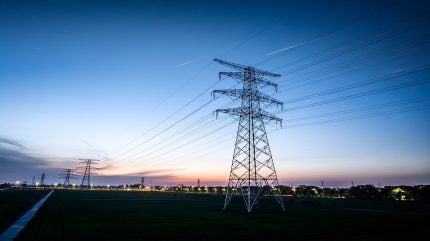
Transgrid’s Transmission Annual Planning Report (TAPR) for 2025 has revealed the completion of the ‘ramp up’ phase of New South Wales’ (NSW) energy transition in Australia.
It reported a five-fold growth in wind and solar generation over the past decade, while coal generation declined to around 60% of the energy mix.

Discover B2B Marketing That Performs
Combine business intelligence and editorial excellence to reach engaged professionals across 36 leading media platforms.
Transgrid CEO Brett Redman said: “We are now entering the new, highly dynamic phase of ‘deep transition’ in which the grid will undergo dramatic change, with the rapid closure of coal generators and accelerated buildout of renewable generation, storage and transmission.
“During this time, we forecast NSW transitioning from the current threshold of about 40% renewable energy to around 90% in 2035.”
The TAPR 2025 outlines the new transmission projects that will form the backbone of the future grid. These include EnergyConnect, HumeLink, Hunter Transmission Project and QNI Connect.
The report also provides updates on Transgrid’s network augmentation projects and collaborative efforts with EnergyCo and local electricity networks for Renewable Energy Zones (REZs).

US Tariffs are shifting - will you react or anticipate?
Don’t let policy changes catch you off guard. Stay proactive with real-time data and expert analysis.
By GlobalDataThe report highlighted record growth in generator connections in the last 12 months, with Transgrid supporting over 10GW of new renewable energy and storage projects.
Redman added: “We are processing more applications than ever before from new generators and energy storage facilities wanting to benefit from connecting directly to our transmission network.
“Since 2024, more than 6.6GW has progressed through key project connection milestones.
“Connection interest from battery energy storage systems (BESS) has surged, with more than 3GW achieving or progressing towards commissioning.”
Proliferation of data centres and increasing industrial loads are increasing the peak demand, while the minimum demand is declining faster than projected earlier.
For the first time, Transgrid’s report includes multi-decade plans for augmenting supply corridors to bring more renewable energy to Greater Sydney. This is part of the ‘new transitioned era’ vision for beyond 2035, aiming to power the city’s growing, electrified economy with sustainable energy.
The TAPR 2025 also forecasts significant developments for the next two years, such as a 44% slump in minimum demand in NSW and zero minimum demand by the early 2030s.
Additionally, it predicts an 8GW increase in rooftop solar capacity in NSW and the Australian Capital Territory (ACT) by 2035, 5,200GWh of electric vehicle charging, and at least an 800MW increase in data centre load.
In the past 12 months alone, 4,115MW of additional renewable generation and energy storage have committed to joining the network.
The report underscores the importance of major infrastructure projects in linking REZs within NSW and the National Electricity Market with Greater Sydney, ensuring a secure power supply while facilitating the region’s transition to cleaner energy.



